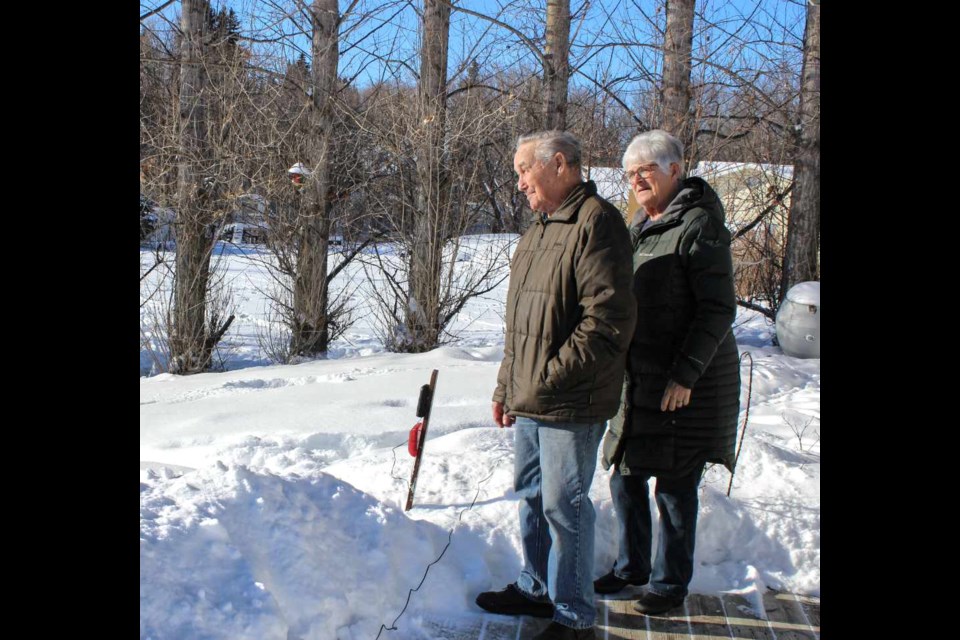Bill and Louise Haskett live in a beautiful location along Government Road S. The white-tail deer think so too. The backyard is staked with electric fence wires and electronic devices in an attempt to deter the creatures.
It’s handy for the wild creatures to lounge in the park on Town property, near the Fish for All pond and the soccer pitch, just metres from Haskett’s home.
Hungry deer have dug down to their flower bulb roots. Day lilies, just planted last summer, and ferns are among their favourite fare.
Not only that, the Hasketts have been disturbed by the noise of deer bumping around the edges of their house and walking on their deck.
Louise opened the bedroom drapes on more than one occasion to see a deer staring back at her, just inches from her window. Using pot lids as cymbals didn’t seem to frighten them off either.
Hasketts called the conservation officer in Virden, asking for help to discourage deer from their property. Louise added that she wanted him to come and see the damage, to realize that she wasn’t exaggerating.
When the conservation officer paid a visit, she said he seemed surprised at the pawed-up yard.
Hasketts had previously purchased a device from a yard and garden outlet, TNT in Headingley, Man. The sonar device produces a frequency that only animals can hear. Bill thinks the cold weather may have hindered its operation.
Manitoba Conservation also provided them with a deterrent device. Success has been limited and now the family has ordered yet another deer repellant item.
When the Empire-Advance contacted Manitoba Conservation to confirm if there were instances when officers used feed to lure deer from town yards, the office provided a response saying they do not lure deer away from towns or yards through a feeding campaign.
Manitoba Conservation says people can face charges for feeding wildlife. Below is part of their response:
HUMAN SAFETY AND PROPERTY DAMAGE
• By feeding wild animals, you may be conditioning them to expect food from people. Deer that lose their natural tendency to avoid people can become dangerous.
• Deer can attract coyotes and wolves.
• When deer are attracted to homes or farms, the risk for vehicle collisions increases.
• Deer attracted to artificial, supplemental food sources will also feed on neighbours’ flowers, trees, shrubs or on farmers’ hay bales.
DEER HEALTH AND SAFETY
• A deer’s digestive system changes slowly with the seasons. In winter, they adapt to digest roughage such as twigs, buds and stems.
•Dramatic changes to this winter diet can lead to sickness and in some cases, death.
• Deer have starved to death with full stomachs in winter because they could not digest high carbohydrate foods like hay, grains, corn and alfalfa.
OVERABUNDANCE
• Natural processes limit deer populations to a level where they live in balance with their habitat. Winter mortality is normal in Manitoba.
• Research shows that providing extra food can raise deer reproduction and survival rates. Deer populations can increase to levels too high for the habitat to sustain causing long-term damage to that habitat.
DISEASE
• Deer gathered at artificial food sources have a higher risk of transmitting diseases such as bovine tuberculosis, chronic wasting disease, brucellosis and parasites to one another.




